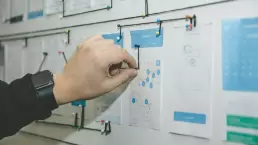“Everything has a personality: everything sends an emotional signal. So even where this was not the designer’s intention, the people who view the website infer personalities and experience emotions.”
— Don Norman, Grand Old Man of User Experience
What role does emotion play in design? Why are we attracted to some designs and not others? How do we experience everyday products, and how can our experiences be improved? These are the kinds of questions Don Norman, director of The Design Lab at the University of California, asked when he first came up with the idea of “Emotional Design.” He was trying to understand the cognitive responses we have when we design and how we can learn to design emotional interfaces that anticipate and accommodate users’ needs. It’s a fascinating concept that deserves a bit of exploration.
What is Emotional Design?
Emotional design is the concept of creating designs that evoke emotions that cause positive user experiences. In 2003, leading researcher and design expert Don Norman published a book titled ‘Emotional Design: Why We Love (or Hate) Everyday Things. The book explored the concept of designers creating products, brands, and other things which aim to reach users on three cognitive levels:
- The Visceral
- The Behavioural
- The Reflective.

Professor Norman was enamored with the idea that everything and anything sends an emotional signal. Therefore designers should go about their work to reach users on these three cognitive levels if they want users to develop positive associations with their product, brand, or design.

When you design, it is essential to address all three levels of cognitive response:
- Visceral – This level is about the users’ gut reaction or first impression of your design. It is a pivotal moment and will often decide whether the product or service is even worth engaging with. These designers must focus on producing clean, uncluttered designs that are easy to use and understand.
- Behavioral– How will your design help the user achieve their goals? This cognitive response is about the users’ level of satisfaction and whether they feel in control.
- Reflective – Once the user has become acquainted with the design, they will judge its performance and the benefits, including whether it is good value for money. Are they happy with the design? Will they keep using it? Will they recommend it to friends? This is where you can tell whether or not the user has formed an emotional bond with your design.
How can we Design Emotional Interfaces?
The next step is to start creating. The concept of emotional design can apply to a wide variety of products, services, and brands. As a result, the process of implementing this concept will differ from one design to another.
The first step in many workflows should be learning as much as you can about your audience, user, or customer. After all, it is their emotions that you are aiming to anticipate and accommodate for. Once you have some idea about the user, you can start to experiment: this is the fun part.
Here are a few things to consider when applying emotional design to your creative process:
- Personalize– ensure that your designs are as tailored as possible to your potential users. This should help to engage all three levels of cognitive response and help them form a bond.
- Customize– Keep updating your design to make sure that it is as relevant and necessary as whatever else is currently on the market. Users will quickly move on to something else if your design becomes obsolete.
- Focus on the details– to make the most of the Behavioral and Reflective levels, and designs should be refined and polished. This is the best way to remove mistakes and bugs and help users feel comfortable with your product or service.
- Tell a story– If you can, try to include some sort of story in your design. Stories are the way to the heart and help to build empathy. For a simple product, this may not be easy. However, if you are designing a service or a website or the look and feel of a brand, storytelling is a great way to connect on an emotional level.
“Positive experiences drive curiosity. They help motivate us to grow as individuals. [and] the fact is that the emotional design of a product or service affects its success—and thus the bottom line.” (InteractionDesign) Therefore, knowing how to harness this information about the emotional connection is essential to help inform the designs we create daily.
The three levels or aspects of the emotional system are interlinked. Each can be stimulated in different ways, but all contribute to how we experience and respond to designs. Professor Norman’s concept of Emotional Design is a valuable way to understand and refine the creative process and should aid in creating innovative designs.
How do you create designs that connect with users? Learn about the concept of Emotional Design and how it can be used to anticipate and accommodate the needs and responses of your users. Then, get in touch with our UX experts to learn more about emotional design and how our design process works here at Radiant.

